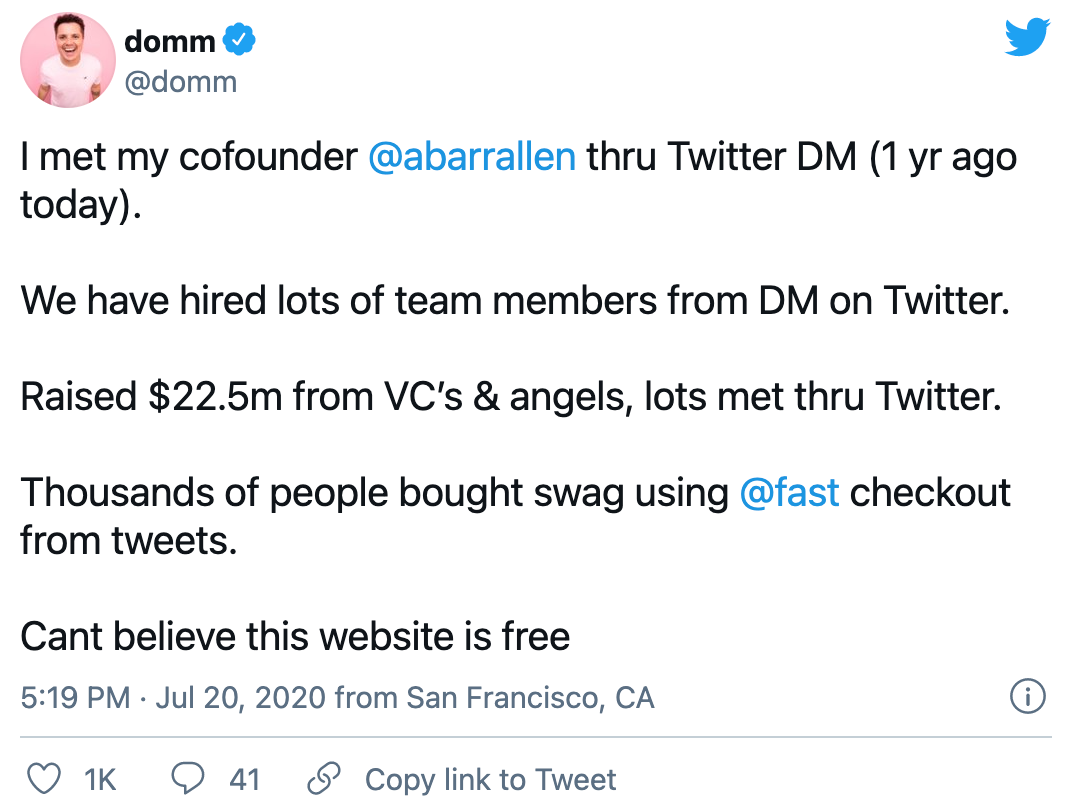Nick Costelloe
More posts from Nick Costelloe
The harsh truth: Some of the advice you read about marketing is incorrect.
While not always intentionally misleading, you’re often absorbing content written by:
- Marketers without a breadth of experience: People who’ve marketed a single product and have a limited — or biased — view on a channel.
- Non-practitioners: People who’ve never run experiments, but pass along (sometimes outdated) marketing insights that they’ve read online.
After running thousands of experiments for brands like Microsoft, Segment and Perfect Keto, here are 10 significant lies we’ve realized you’ve been told about marketing (on email marketing, ads and referrals).
1. “Send a welcome email immediately after signup.”
It’s better to avoid sending emails right after people sign up on your site. We’re used to getting generic, unimportant welcome emails every time we sign up for anything online. So most people will reflexively discard your welcome email as spam.
Instead, try delaying your welcome email by 15 to 45 minutes.
The delay removes the subscriber’s mental connection between signup and your email, bypassing the reflex to ignore.
As a result, you’ll likely get more opens and more engagement.
2. “Only highlight your best product reviews.”
For context, reviews are a big deal:
- 93% of consumers claim product reviews impact purchase decisions.
- The social proof of having 50+ product reviews increases conversion. Shoppers trust peers more than they trust brands.
But imperfect reviews can generate more sales than five-star ones. How?
When a partially negative review weighs your cons versus your pros and concludes that the product was worth purchasing anyway, that sounds authentic and honest.
In contrast, strings of flawless five-star reviews don’t signal authenticity. Psychologically, they’re less likely to sink in as positive social proof.
Here’s what you can do:
- Make sure your post-purchase email flow contains a request for reviews. The more reviews you have, the better.
- Don’t bury slightly negative reviews. If someone leaves a four-star review and offers a fair (and insignificant) critique, showcase it toward the top of your product page.
3. “You have to send a newsletter every week.”
Most newsletters shouldn’t be sent weekly. This goes against what most creator economy entrepreneurs suggest.
But high cadences force newsletter writers to rush and publish lower-quality information to hit self-imposed deadlines.
Instead, consider only sending when you truly have value to add. At a minimum, consider setting a more reasonable cadence like once or twice a month so that you’ll have enough time and content to consistently hit a high-quality bar.
We send our Growth Newsletter twice per month, since it requires time to run growth experiments, workshop with our community and write novel, actionable tactics. If we published more frequently, we’d be doing our subscribers a disservice.
4. “Your startup needs a great referral program.”
The most famous referral success stories are outliers. The well-known referral programs that grew brands like Airbnb and Dropbox are highly unlikely to work for your startup.
Instead of trying to “build a successful referral program,” you should be focused on finding your company’s social loop.
Examples:
- If you run an e-commerce pet store, your loop might be getting dog owners to post pictures of their dogs on Instagram (with you tagged). Barbox customers frequently post photos of their dogs enjoying Barbox’s products — a social loop that brings more attention, clicks and sales for Barkbox.
- If you’re in edtech, your loop might be a bustling community where eager students get free course credits when they invite their classmates.
- If you’re a SaaS founder, your loop might be a freemium tier where your customers include your badge in their website footer.
There are no one-size-fits-all solutions. You have to dig into what your product offers and align that with an incentive that increases your exposure.
5. “Always include a message while prospecting on LinkedIn.”
When connecting with people on LinkedIn (for B2B outreach), test not including a message with your outreach request.
We’ve found that no message appears ambiguous and, as a result, less like a sales pitch. People accept the request more often.
In contrast, a templated message looks like outreach automation, and it triggers people’s reflex to ignore you.
6. “If you can’t get ads to run profitably, your business model is broken.”
The reality is that most startups never get ads to run profitably. They’re usually worth testing because they’re quick to experiment with and scale.
But if they don’t work, focus on finding another channel that’s a better fit for your model:
- SEO
- Referrals
- Product-led growth
- Sales
- Social content
Far more startups have success with the above channels than they do with social ads.
7. “You need to go viral.”
Most products won’t go viral. Growing through word of mouth is far more realistic and applicable to most startups.
Word of mouth is the result of a product that removes obstacles or pain from people’s lives and gives people dopamine hits of delight. Create a product that people can’t help but share with their friends.
8. “You need PR for your launch.”
PR is incredibly valuable, yes. It’ll increase your startup’s rank in Google and drive traffic.
But combine your launch PR with something that’ll continuously generate customers: An engaged audience.
Audiences can be built alongside your product:
- Build in public on social media. Post regular updates on your progress. Make your followers feel like they’re part of the journey.
- Add value: Offer insight into building your company or give away some of your value propositions for free in the early stages. You’ll build social capital that you can cash in for sales when you launch.
A group of people who want you to win will help you build momentum for launch.

Domm Holland grew his company, Fast, in public on Twitter, building an engaged audience of potential customers along the way.
9. “You should focus on blogging for SEO.”
Most startups actually find it significantly more useful to create content to show their value and to help others.
This generosity — ironically — leads to a high-performing funnel. Quality content leads to trust and sales.
10. “Great products don’t need marketing.”
Even the best products need marketing to effectively reach the right people at scale.
Tip the first domino for the rest to fall.
Demand Curve: Email marketing tactics that convert subscribers into customers































Comment